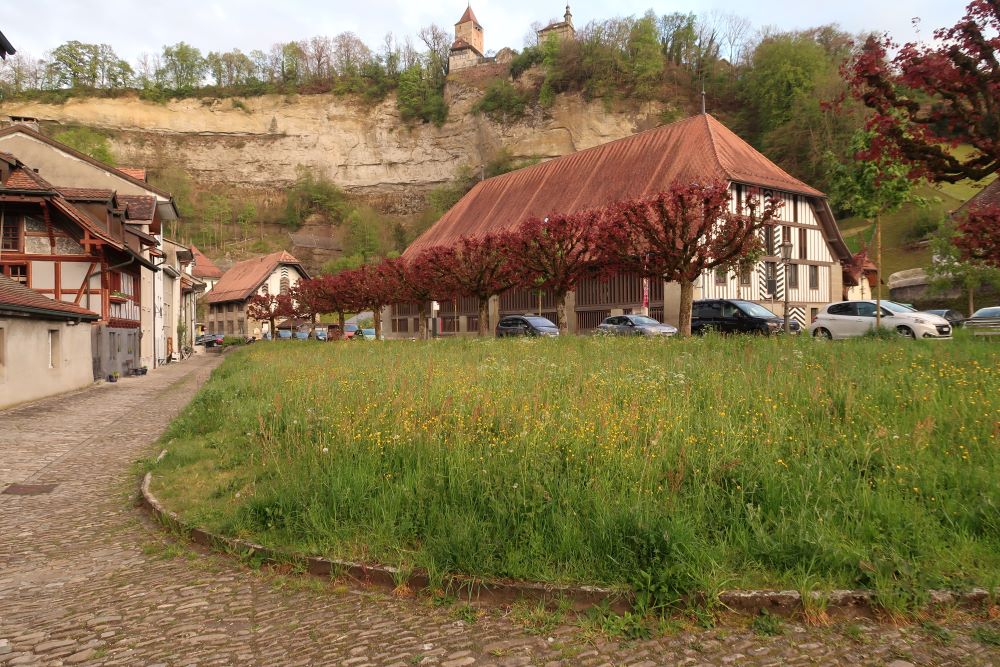Porrentruy (Pruntrut in German, canton of Jura) was the seat of the bishop of Basel for a long time after he left his episcopal palace at the Münster in Basel during the Reformation in 1529. The large episcopal complex on the hill still bears witness to this period. The canton’s coat of arms still shows the bishop’s red staff.


The bishop was also a Prince of the Holy Roman Empire of the German Nation, hence the official name prince-bishop. He resided in Porrentruy until the French invasion in 1792. The French revolutionaries annexed this area of the prince-bishopric and initially called it the Rauracian Republic (la République rauracienne) and, from 1793, départment Mont-Terrible.

After the French annexation of the remaining part of the prince-bishopric in 1797, the entire area became part of the départment of Haut-Rhin in 1800.
After Napoleon’s defeat in 1815, the territory of the former prince-bishopric of Basel, including Porrentruy, was assigned to Canton Bern. Basel also acquired some smaller parts. Since 1979, Porrentruy has been part of the canton of Jura.
The bishop never returned to Porrentruy after 1792. The chapter had been residing in Catholic Arlesheim since 1678. The dom and city palaces still characterise this village. The seat of the bishop of Basel was moved to Solothurn in 1828. It is the complex Swiss (religious) history in a nutshell.











Eglise Saint-Pierre (1333)
The grandeur of the bishop’s presence is still visible in Porrentruy, including the Hôtel-Dieu and the glacière from the 18th century. The Glacerie is where the ice blocks were kept to cool the bishops’ drinks and food.



Hôtel-Dieu (1675), former hospital
The (medieval) streets, well-preserved centre, the ubiquitous presence of the watch industry (La Fondation Horlogère, among others), and its proximity to the beautiful Jura give this town a special allure.
For those interested in climate change, the city was situated on a subtropical sea some 20 million years ago. Even further back in time, about 150 million years ago, the Jura was a favourite habitat of Dinosaurs. About 20 thousand years ago, the region had a polar climate.
(Source: J.-C. Rebetez, D. Bregnard (Ed.), De la Crosse à la Croix. L’ancien Évêché de Bâle devient suisse (Congrès de Vienne-1815), Neuchâtel, 2002)


Rekonstruktion und Model of the castle, around 1650. Source: Château de Porrentruy





The Porte de France (14th century) is the only remaining one of the four medieval city gates.

One of the magnificent Renaissance fountains


Town Hall (Hôtel de Ville), 1764, and its wild pig


The Neighbourhood ‘Belle Epoque’. The city prospered when Alsace was annexed by the (second) German Reich in 1871. Trade and (watch) industry flourished

Hôtel des Halles (1766)

Hôtel de Gleresse (1750) and the archives of the former bishopric of Basel



Grand Rue



Ancien Collège des Jésuites (16th century)


Nearby the remains of the city wall


Protestant Church (Temple protestant)
Other impressions of Porrentruy

















































































































































